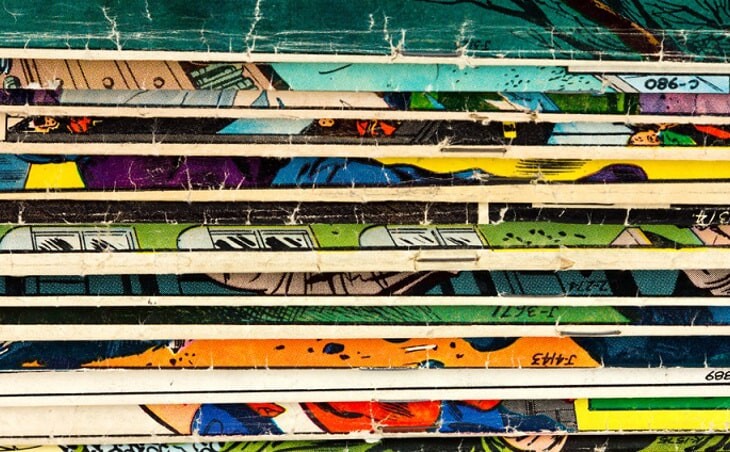Polish comics have been loved for generations. Although the history of native picture stories dates back to the interwar period, then they played a completely different role than they do today. However, there is a pantheon of Polish artists who created their works many decades ago, and despite this, they still teach, laugh and move crowds of readers. What is the purpose of the comic book form? Why is it so wildly popular? We will follow these questions together in a moment!
Perfect friendships, long journeys
Big names such as Christa, Makuszyński or Chmielewski, better known as Papcio Chmiel – have left behind a great legacy of ageless heroes, such as the Slavic warriors Kajko and Kokosz, the charming and brave Koziołek Matołek, as well as the unforgettable trio – Tytus, Romek and A’Tom! What makes these characters permanently engraved in the consciousness of Polish readers? Why have we been reaching for these comic books for years and putting them hopefully in the hands of our children?
Fantastic events, tons of great humor, the cultural layer of the story – which we absorb through our skin due to our social affiliation, and the lightness of conveying intuition about the characters’ relationships and emotions, enchanted in furrowed brows, roguish smiles or outbursts of anger as clear as a volcanic eruption – they can literally drive you into Armchair. In addition, there is a fast-paced action that is not afraid of freezes and jumps, as well as our hunger for curiosity about what is hidden in the next pages of the story. This interpretive storm is experienced by young and old alike! It very often happens that a certain part of the comic book has worn-out pages, because the reader returned to a given chapter, action or a specific picture many times, using the right to return whenever he wanted.
What is a comic after all? Image or text?
Contrary to intuition, it is not so easy to categorize comics as a specific type of artistic phenomenon. On the one hand, the success of a given title may be determined by the aesthetic layer of the text – highly stylized or equipped with razor-sharp satire. Other times, we encounter visually masterful comics – with an expressive line, showing the speed and unpredictability of events concerning the fate of the characters, or on the contrary – with frames refined in such a way that each one could be a separate canvas in an art gallery.
However, neither the text nor the image determines the readership of the comic book title. What matters more is the timing of the plot, surprising scenes and the universality of the message – that is, the reader feels immersed in the action! By interpreting the events that emerge from the image and text, we simply immerse ourselves in the story with our ears.
After all, no one will deny that the plot develops in comics at the speed of an avalanche, which is impossible to achieve in the course of a novel or a story. It is the pictorial part of the comic that affects the imagination like an adrenaline injection that makes it difficult to put the notebook down on the table and stop reading. We will put a comma here – can this process be called reading without batting an eyelid?
Taking in the amazing antics of the heroes with our eyes – we all turn into children!
Reading comics – this is a colloquial expression that we refer to getting acquainted with their content. But how to interpret the visual reception, seeing a work of fine art? In short, does the text complement the pictures, or is it the other way around? Aesthetically, comics are a medium. How the recipient classifies the comic depends on its interpretation each time.
After all, we read images sensually, and it is possible even without knowing the language, but only the phenomenon of sweeping a sequence of images equipped with text, in time, in a clearly defined order by the author, shows how unique the form is hidden in the plot-filled windows of the comic book. It seems that immediacy is one of the key words that make even a young, impatient reader find solace in the comic, because he has just received something tailored to the needs of his mind as fast as a hummingbird.
Just like a movie, we are able to break down the comic into layers, none of which functions in isolation from the others. Of course, it is much less complicated and demanding of the film, both in terms of concept and in the very act of technical reception. And here the comic wins the battle for the soul of the recipient with the film, because the act of reading the comic book is more intimate, as we have already mentioned – immediate, and the comic itself, as a volume or notebook, is not afraid of traveling in a school backpack or bicycle basket.
Here, the creators also pay tribute to children and youth. Both the adventures of the Slavic Asterix and Obelix, the famous scouts and monkeys, as well as the goat from Pacanów, which reached the pyramids and China – are available in the form of handy and inexpensive publications. Once torn or lost, a comic can shed a few bitter children’s tears, but thanks to the constant reissues of the greatest Polish comics, it can also be redeemed for a relatively small price.
On the publishing market, comic books of a new generation of authors are constantly appearing, who want to convey important content through a known form, which, however, allows for a lot of freedom. When you think that there will be nothing in comics that could enchant three generations equally, just like the works of Polish masters of the last century – go for a search in a good bookstore such as e.g. https://egmont.pl/Komiksy/Komiksy -polskie,64846854,k.html and don’t tell such stories again!

